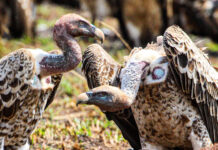This is part two of a series of blogs about my safari experience. Part 1 is here.
Tour Operator: Gamewatchers Safari
Safari Country: Kenya (I went to Zanzibar too, but not on a safari – that was for relaxing)
Disclaimer: This series of blogs on the safari experience is going to come off as glowing for Gamewatchers Safari. This is not intended to be a shill piece for them. I am simply stating my opinion, which is very high, of their operation. If anyone at Gamewatchers Safari is reading this and wants to have me come over on another adventure to write about your operation…I AM IN!
[adinserter block=”1″]
Getting To The Camps
After a tremendously long flight (Pittsburgh -> Washington DC -> Zurich, Switzerland -> Nairobi, Kenya) I was finally in country. After two nights in Nairobi it was time to head out to the camps. The camps are not a quick drive from Nairobi. As my goal was max wildlife I had to get to remote and far off places. That meant flights.
Flying to the camps required taking twin engine prop planes all booked by Gamewatchers Safari through Kenya Air. The camps are on the airlines regular commuter routes. In order for an airline to have a stop in the middle of nowhere that would mean that there is demand for it. That makes me feel good to know that enough people want to go to the Masai Mara area for whatever reason that a stop is on the commuter route. Sure, there might be no airport in the Masai Mara, but at least you can get dropped off and picked up.
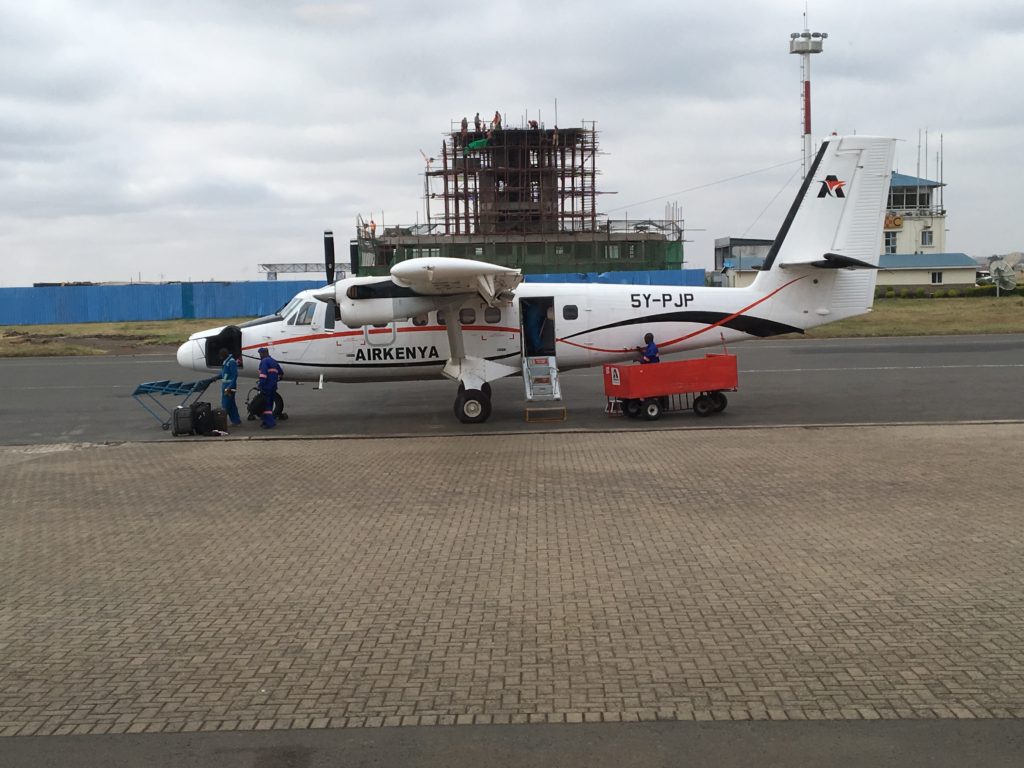
I have to say that I went to Kenya under the impression that the sexes were not necessarily equal. I was surprised and impressed to see that the majority of the pilots on these short flights were, in fact, women. Kenya is progressive with their short distance pilots in that way!
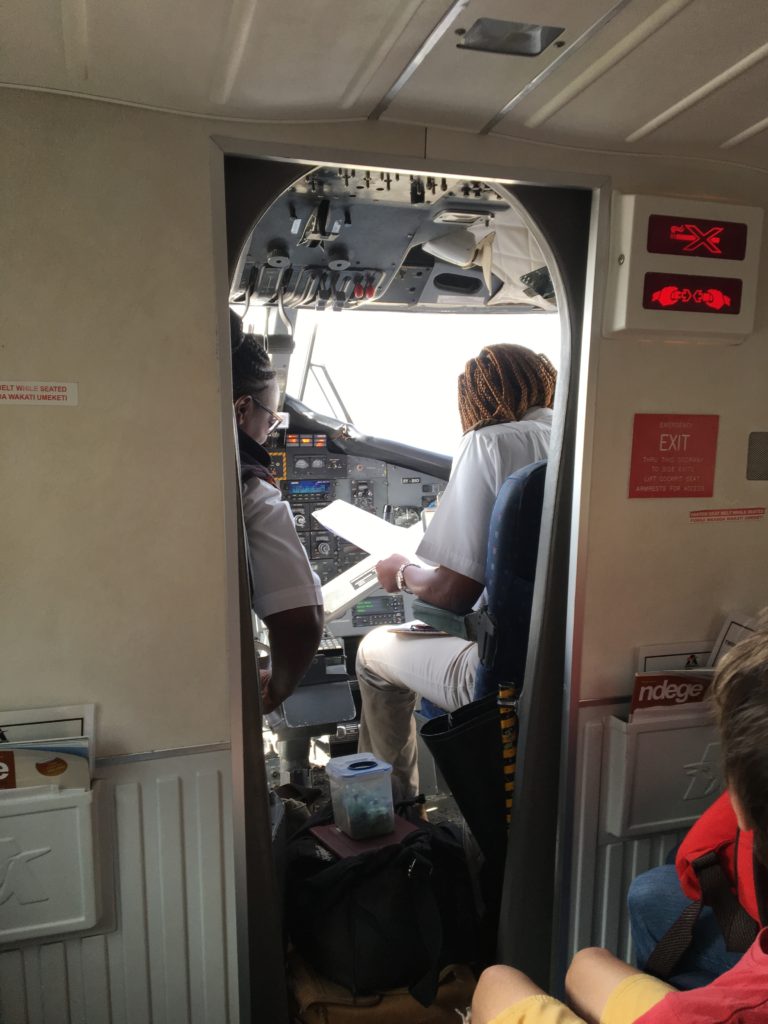
After you leave Nairobi the airports become less and less sophisticated. One camp had an airport with a dirt runway and one building that housed a really nice looking restaurant.

The next camp was just a tent and grass on the Masai Mara. Yes, the grass that the animals were grazing on. There is nothing quite like landing and watching megafauna scatter from the grass “runway” as the plane is landing. Then, after the plane leaves they go back to eating the grass like nothing had happened.
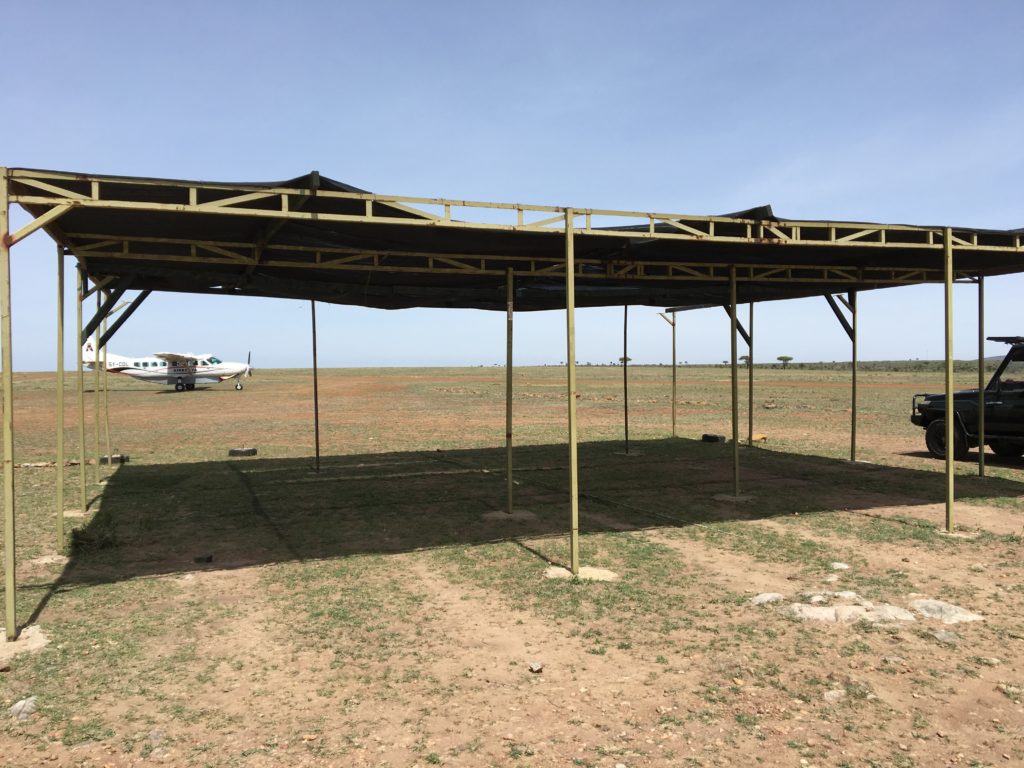
The last camp’s airport was, well, it was just a tree with some white stones. Now THAT is the middle of nowhere!
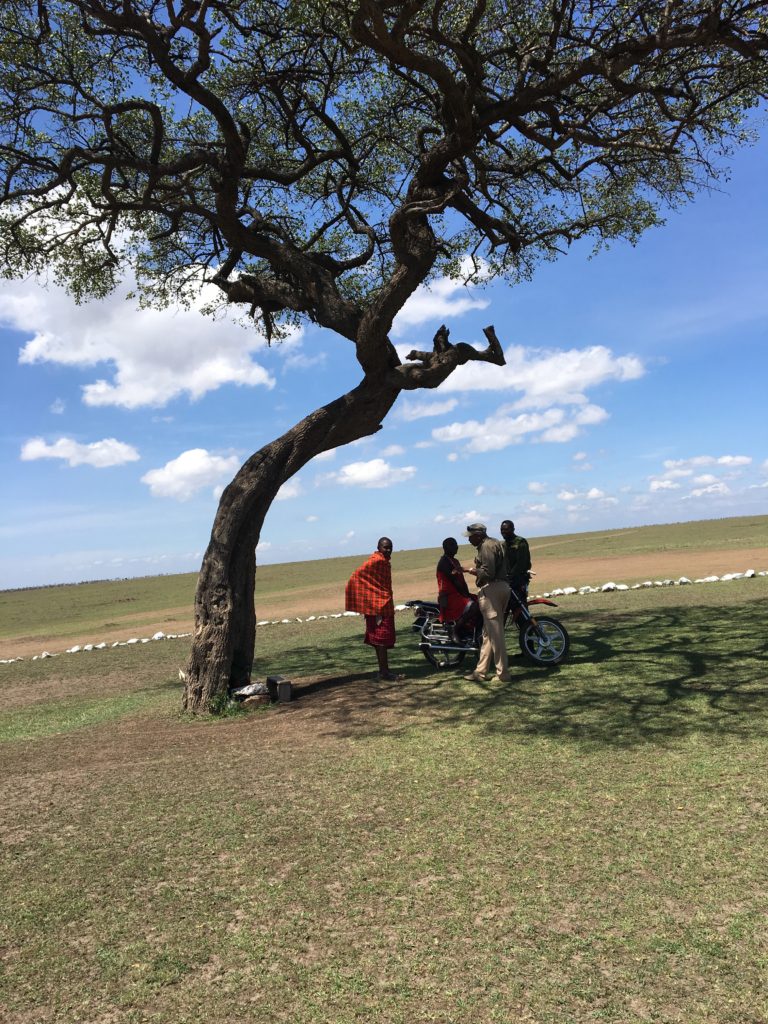
Overall, I found the flights to be no problem at all. They were typically about 45-minutes to an hour long and landing on the dirt runway or the grass felt just the same as landing on a regular runway.
After the flights land the Masai guides pick you up and it’s time to head to the camps.
[adinserter block=”2″]
Camp Layout
The camps are set up in a consistent way with a few central tents – business office, mess hall, and meeting tent in addition to the Masai’s quarters and the adventurer’s tents.
Each mess hall provided a communal relaxation spot for the adventurers to relax and get to know each other (also in some of the camps were people involved in the conservancies as well as researchers). While hanging out at the communal relaxation spot, the Masai, probably the world’s greatest customer service reps, are quick to bring the guests a beverage of their choice (I drank a lot of tea and Tusker beer) or to bring them a quick snack. Also, the Masai were genuinely interested in the safari experiences of the guest’s and asked many questions about what animals each adventurer had seen that day. They are quite passionate about the wildlife and will regale the adventurer’s with their own experiences if asked.
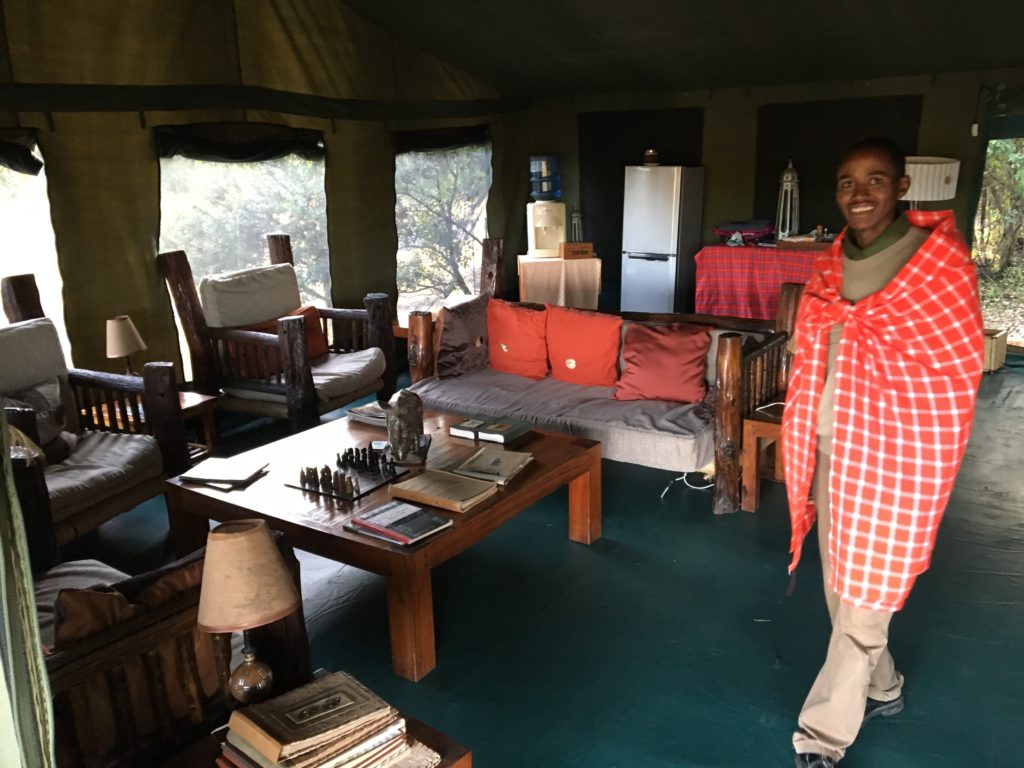
To pass the day during the brutally hot African midday or at night, the communal area had plenty of wildlife reading material, chess, and some board-games.

I knew going into the adventure that there were three square meals per day. As a level-10 fatty-cakes I knew that wouldn’t be enough food. So, I brought a ton of snacks in the form of Lara bars, jerky, and mixed nuts as fat-guy insurance. The Masai plied me with so much food during the meals and little snacks that I rarely dipped into my snack supplies. Having my apoplectic fatness satisfied is a great way to make me happy. I assume that is the same for everyone.
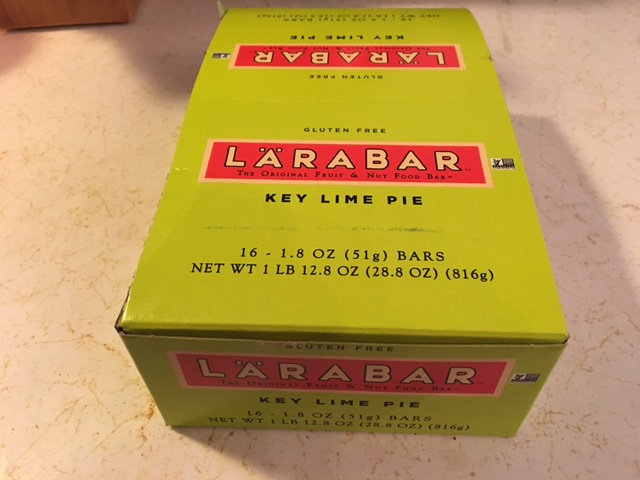
For meals, the adventurers gather at the tables, sometimes we’d eat outside when it wasn’t too brutal, at specified times to break bread as well as tell tales of what animals were spotted that day (a leopard was an elusive prize sighting). Meals consisted of a soup, a main course (usually some kind of meat, veggies, and bread), and a delicious dessert. The camps had their own chefs to prepare the meals as well as a master chef (not Master Chief) that made sure that the meals were consistently good from camp to camp. I have to say that the meals were absolutely incredible and made roughing it not bad at all!
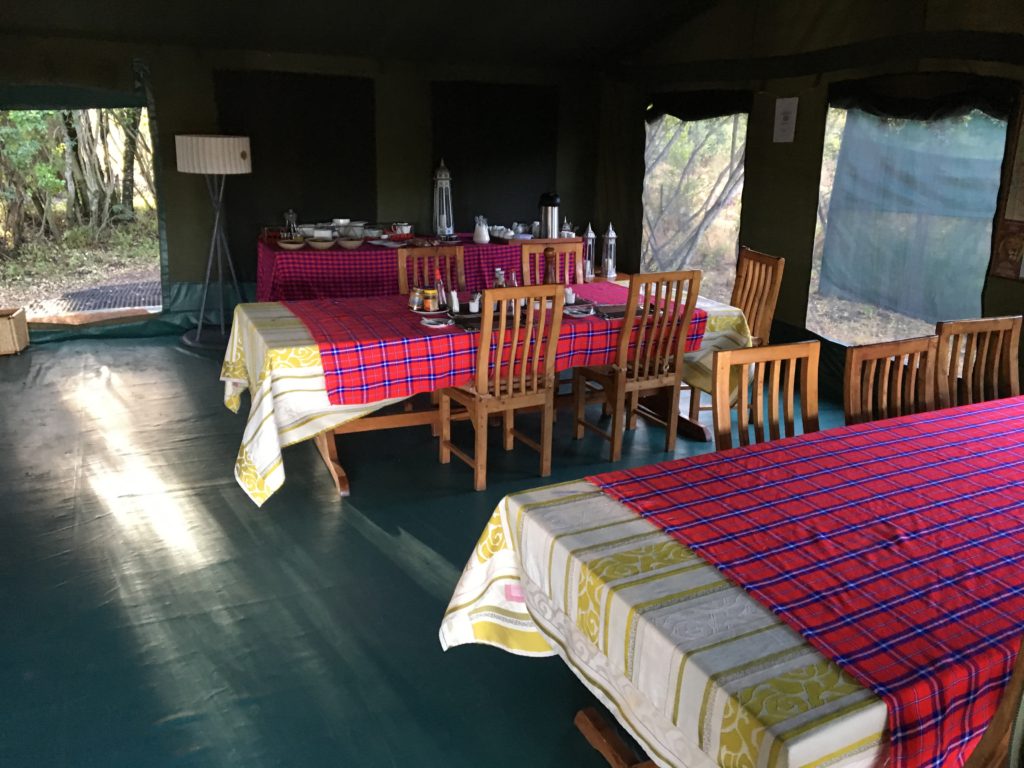
The Tents
The tents were quite large and provided an adequate living space for two people.
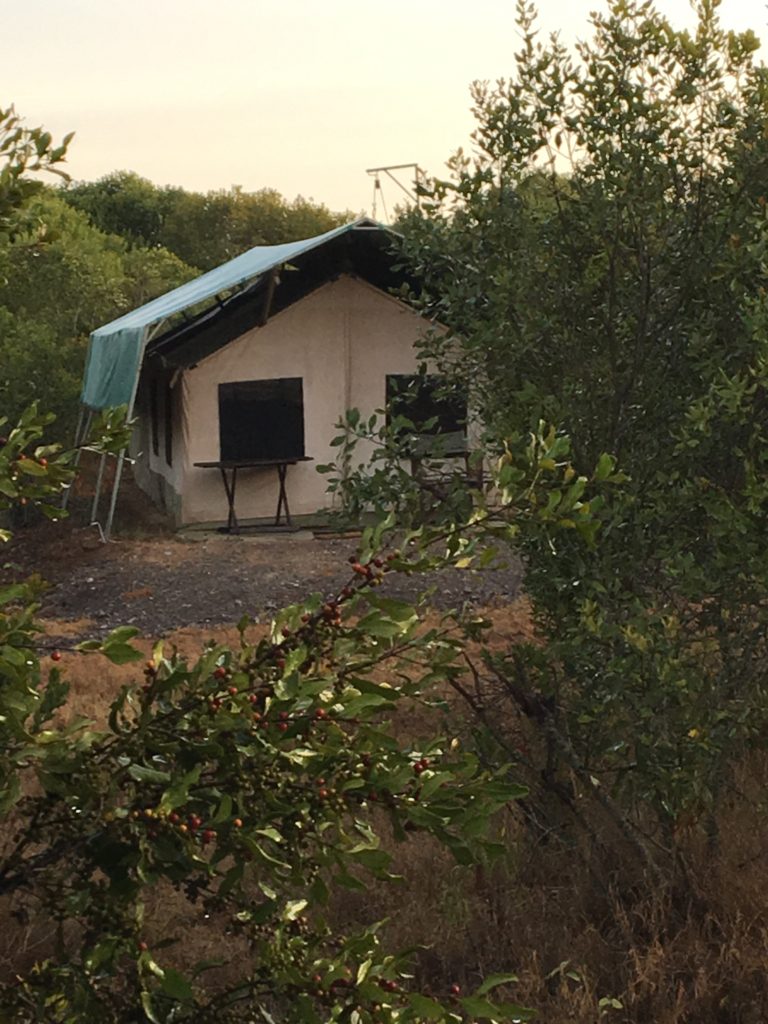
Inside the tent housed one or two queen sized beds, a desk, and various wardrobes to hang your adventure gear.
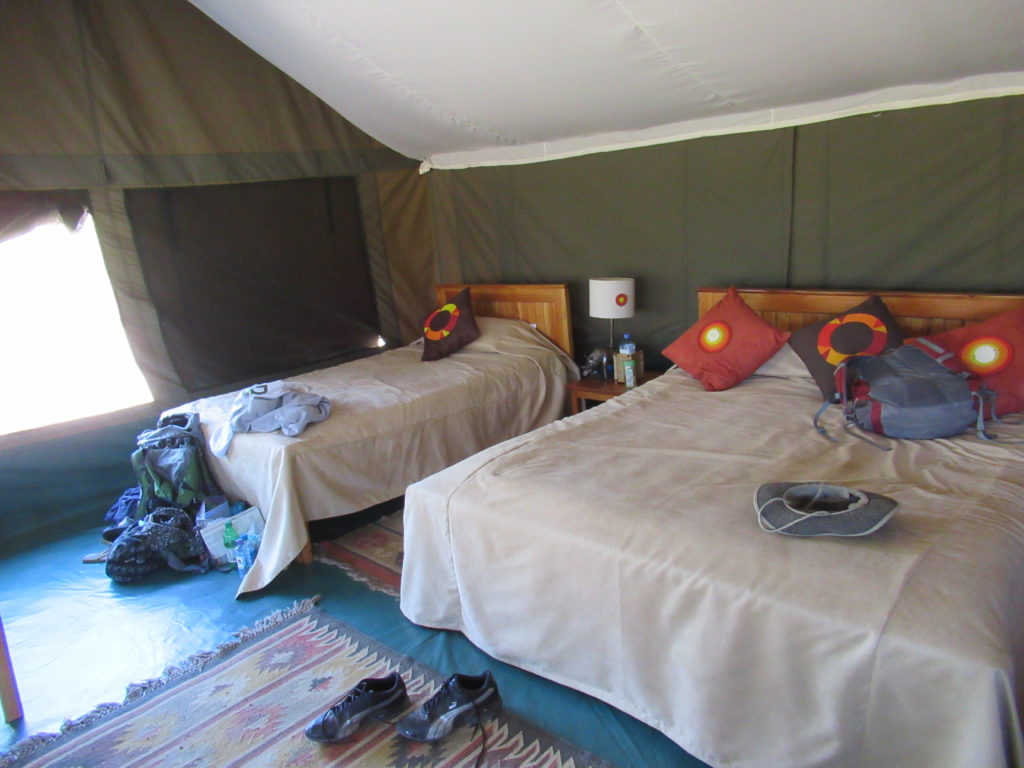
Despite being, ya know, Africa on the equator, it was actually pretty cold at night. When the adventurer’s are having their dinner, typically at 8pm, the Masai put a hot water bottle under the covers of each bed. It was wonderful having that source of heat on those chilly nights. Hey, there is no heater out there and you can’t just go snuggle a zebra. Tent living means whatever the ambient air temp is outside it is in the tent. Even with the chilliness it was never uncomfortable. Those beds are warmer than they look.
The tents had a partition segregating the bed area from the bathroom. Yes, each tent had a bathroom complete with a flushable toilet, a sink with running water (provided by well water), and a bucket shower.
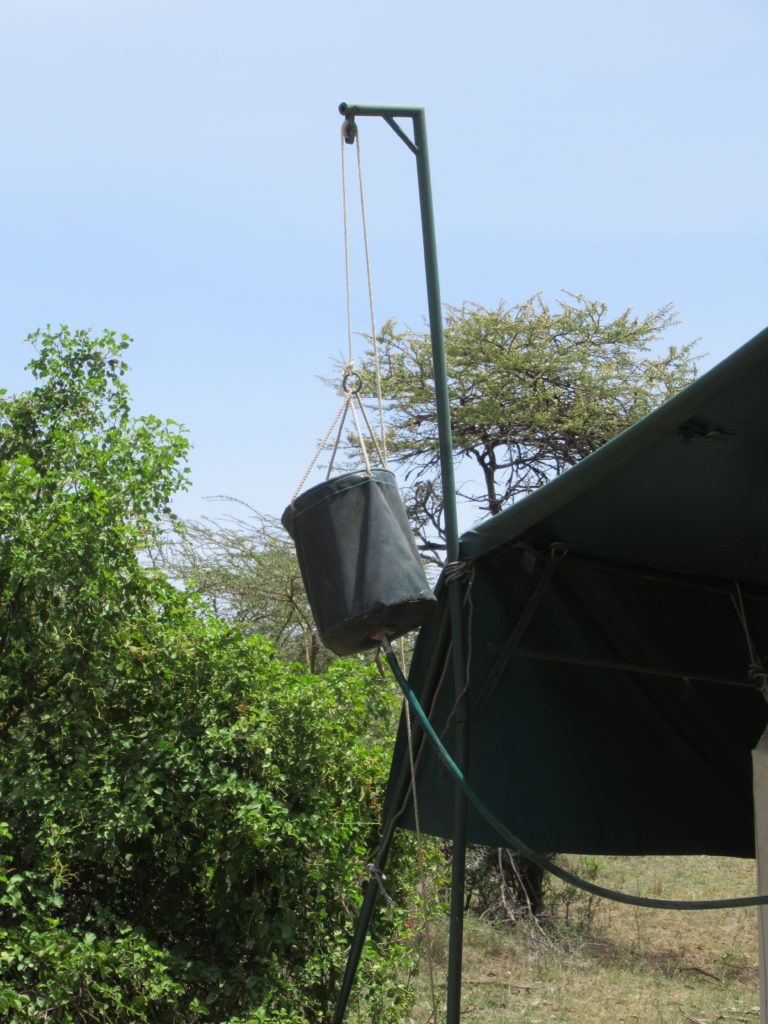
Once a day the Masai would provide one bucket of hot water per guest to shower with. Basically, you use a little water to get wet, you soap up with no water flowing, and then you use the rest of the water to rinse. Are you still kind of dirty afterwards? Yes, but you feel good because you aren’t as dirty. As the adventure went on women washed their hair less and less and men didn’t shave as often. No one gets judgey about each other’s filth levels because everyone is a little gross. Heck, I grew some form of mutated facial hair that I can only describe as a Wildebeard.
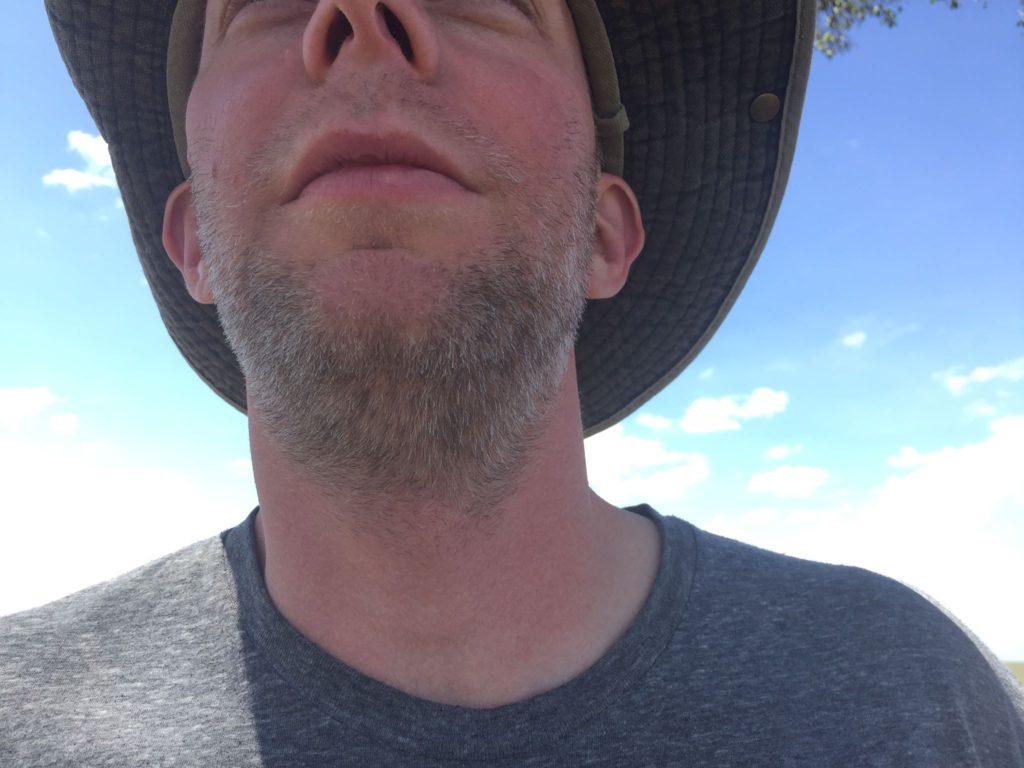
As packing for this adventure required that we could only take 33 lbs of total gear all adventurers have a limited wardrobe. A limited wardrobe means wearing the same items of clothing a few times. If the adventurers wanted to wash their clothes that meant doing it by hand in the sink with a little detergent (available in each tent). Then, you hand your wet clothing out to dry. In the hot African sun it does not take long for clothing to dry out. You do have to keep an eye on your clothing to make sure that the animals don’t run off with it. I saw a lioness in sweatpants that said Juicy across her booty. I think she looked nice.
The tents have some lights in them with a finite amount of electricity powered by the ample solar energy. It was at least enough light to read by and to get around in the tent at night.
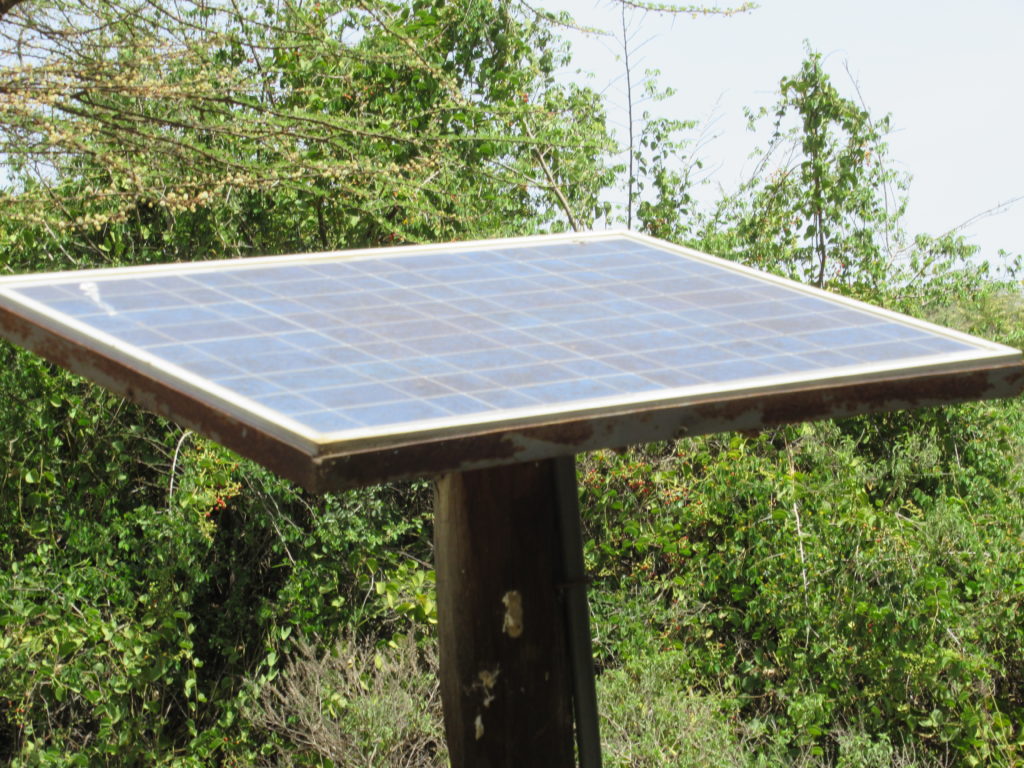
In terms of actually spending time at our tent, we were only there to sleep, bath, and to take a midday snooze when it was just too hot to do anything else. Otherwise, we spent virtually all of time on safari. And that is exactly the way it should be!
Living With Wildlife
The idea of staying in tents is to be immersed in the wildlife. How close did the wildlife get to the tents? Intimately close, but that is why I was there!
By day, the adventurer’s tents usually suffered from some kind of harmless monkey raid. Vervet monkey’s cruised some of the camps while baboons cruised other. The monkeys loved to get into the tents to raid for such things as food, toothpaste, and people’s medications (they cleaned out a lady’s high blood pressure medication). Thus, whenever you left your tent you had to monkey-proof it to eliminate any opening possible that the clever simians might exploit. Otherwise, little hands would probe for ways to get in.
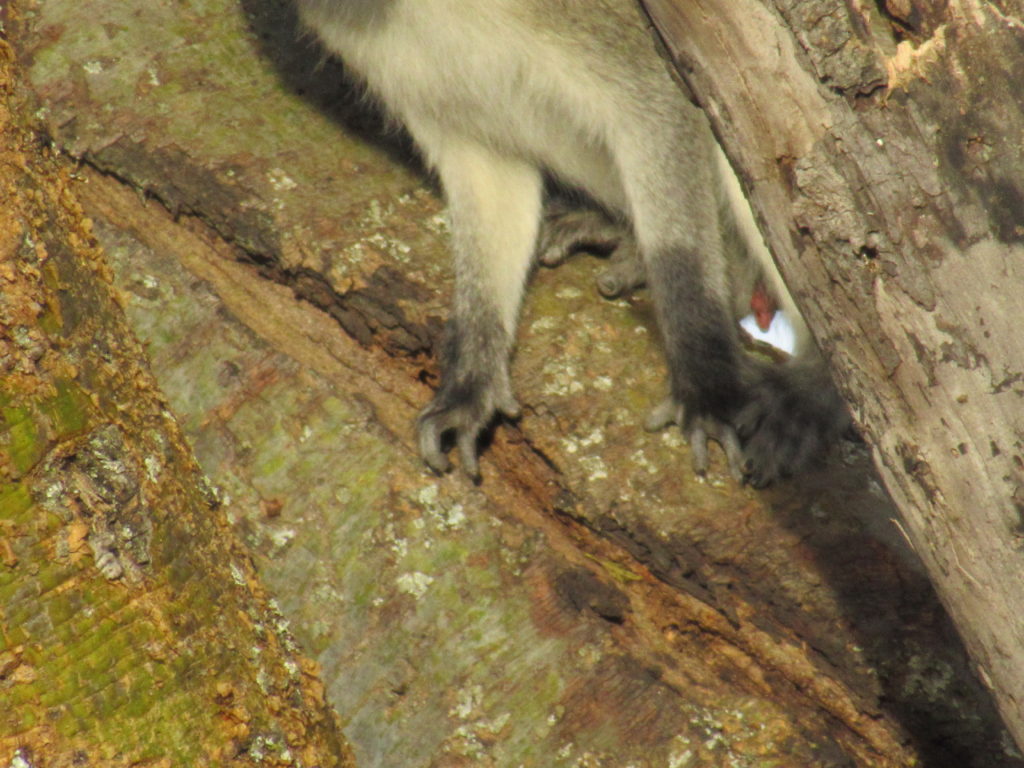
One camp had a troop of about 80 baboons that would eat the figs on a tree growing right by my tent. Imagine trying to take a nap when baboons are fighting each other outside or, worse, climbing on top of the tent!
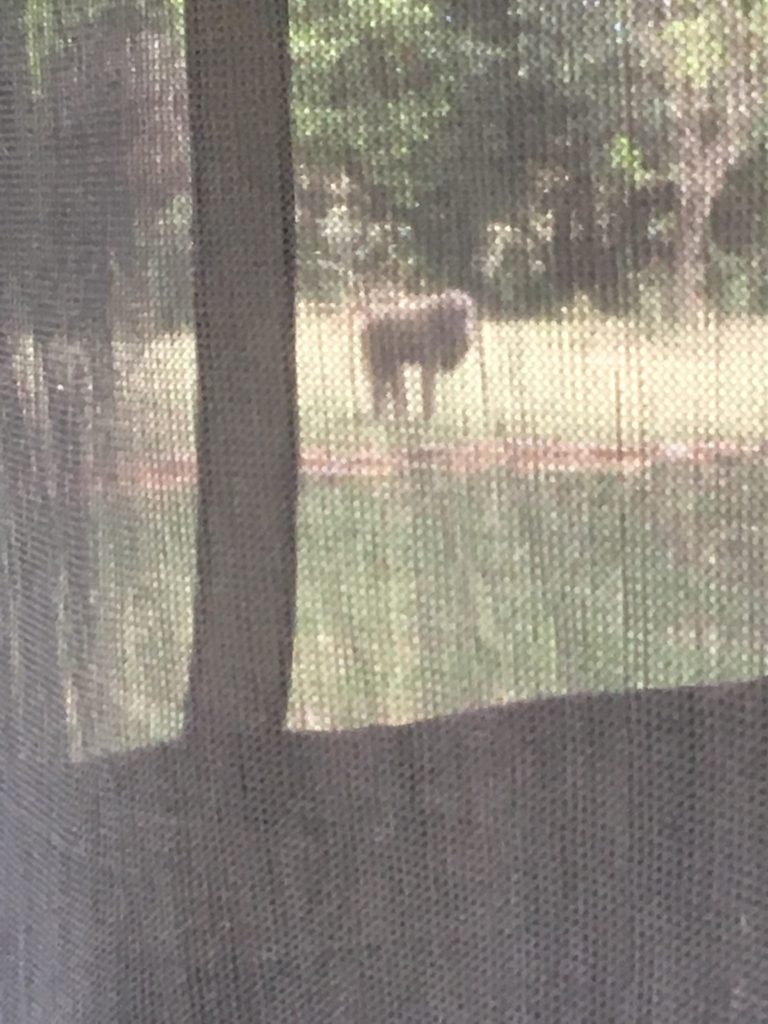
At night the adventurers cannot be outside without a Masai guide. It is just too dangerous. Aside from the standard lion roars and hyena calls that were heard every night to alert of their nearby presence, massive herbivores would come into the camp at night to graze on the grass. Every morning you would wake up to find a poop-reminder that there were visitors overnight.
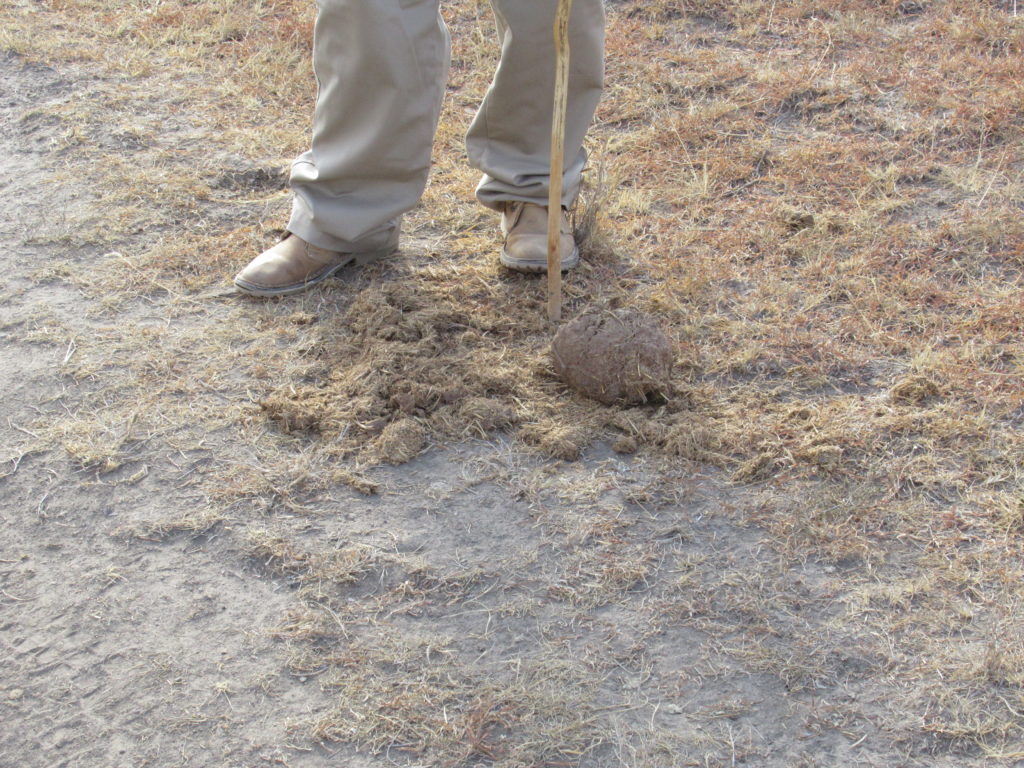
In fact, one camp had a resident hippo named Simon that counted the camp grounds as his grass buffet. As hippo are prolific killers and maimers of humans the adventurers at this camp had to be especially wary at night. I woke up one night to hear Simon directly outside of my tent. He was so close that not only could I hear his teeth grinding up the grass, but I could hear his stomach gurgling with digestion. Why was he hanging out at my tent? Because his home was off of my front porch.
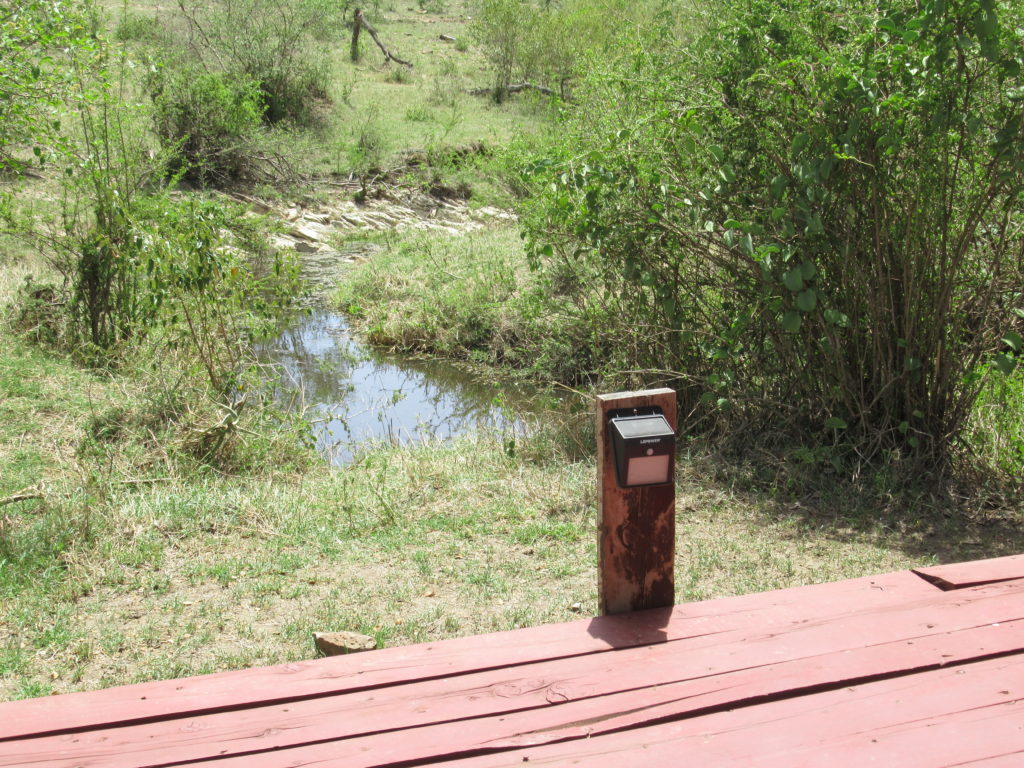
But what about the predators? Do they come into camp? Probably. I know that leopards occasionally hangout in the trees around the camps. Otherwise, the predators are very afraid of people so they generally stay away.
What about if you really did need help? Each tent is furnished with a whistle in case you do need to summon help. The Masai are always around and do patrol the camp at night.

And if you do blow that whistle then you can be assured that camp security will arrive quickly. The safety of all parties involved was definitely of optimal importance!
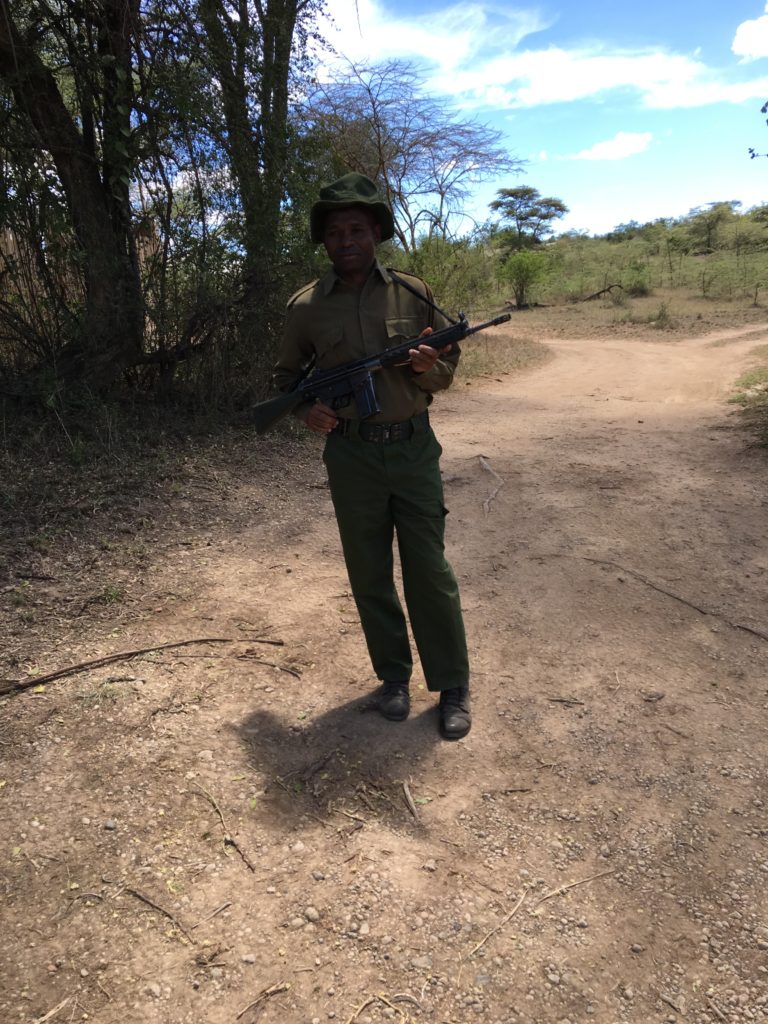
Did The Camps Deliver What I Wanted From Them?
Yes, absolutely. Despite the very close encounters with wildlife in the camp that I wanted I never felt danger. The Masai were extremely attentive in terms of escorting adventurers when needed as well as waiting on them hand over foot. The tents were cozy, the beds were perfect, and the bucket-showers were just enough. And, of course, the food was incredible. I cannot say enough good things about the accommodations.
My tale of what transpires on the safaris will be in Part 3 of this blog


